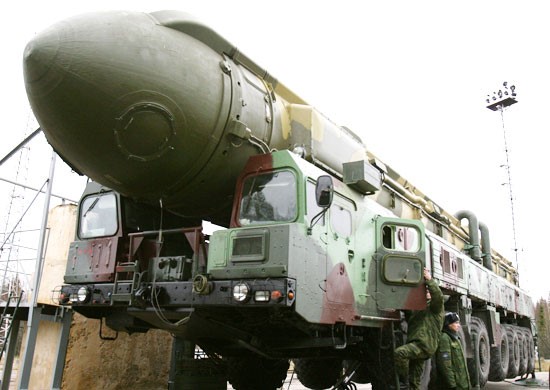As tensions with Russia continue to escalate, recognizing the dramatic increase in its’ military strength becomes vitally important.
The Stockholm International Peace Research Institute (SIPRI) notes that “Russia has embarked on a military modernization program funded by rapidly increasing military spending and has pursued a more assertive foreign policy…Russian military expenditure has grown significantly over the past two decades. It increased by 30 per cent in real terms between 2010 and 2019 and by 175 per cent between 2000 and 2019.”
The actual impact of Moscow’s military spending must be seen in light of a key reality, SIPRI emphasizes: “Military goods and services cost less in Russia than in the USA or most of Europe and, therefore, that Russian military spending has a higher purchasing power. For example, unlike the USA and other large European states, Russia still relies on conscription. In addition, Russian career soldiers have lower salaries: for example, in 2019 a Russian lieutenant colonel received approximately $1330 per month, whereas a (lower-ranked) captain in the British Army received more than $4000 monthly… Over the decade 2010–19 Russia spent nearly 40 per cent of its total military expenditure on arms procurement. This is a much larger share than most other states, including all members of the North Atlantic Treaty Organization (NATO). This means that, in absolute terms, Russia’s spending on procurement was more than twice that of France, Germany and the UK, although its total military spending was just 30–34 per cent higher in 2019.”
While significant attention has been paid, particularly in light of the Ukraine crisis, to the Kremlin’s land forces, the cold war-like emphasis on nuclear weaponry must be carefully noted.
The Heritage Institute reports that “Russia is clearly seeking to gain a competitive nuclear advantage over the U.S.” Not only is Putin seeking to gain a global nuclear dominance, he is using atomic weapons as an economical means to win land battles. “Russia has a stockpile of at least 2,000 non-strategic (low-yield) nuclear weapons (NSWs) that are unconstrained by any treaty, outnumbering U.S. NSWs by at least 10 to one. In 2019, the Director of the Defense Intelligence Agency (DIA) reported that Russia’s stockpile is anticipated to grow even more. Russia operates dozens of dual-capable delivery systems, including short-range ballistic missiles, depth charges, torpedoes, land mines, artillery, and mortars. This disparity is particularly concerning because Russia’s recent nuclear doctrine indicates a lower threshold for use of nuclear weapons. According to the United States’ 2018 Nuclear Posture Review, Russia “mistakenly assesses that the threat of nuclear escalation or actual first use of nuclear weapons would serve to ‘de-escalate’ a conflict on terms favorable to Russia.”
Some in Congress, including Republican Mike Rogers (R-AL), House Foreign Affairs Committee Lead Republican Michael McCaul (R-TX), and House Permanent Select Committee on Intelligence Lead Republican Mike Turner (R-OH) are issuing heated warnings.
“As Russia assembles forces for what would be the largest land war in Europe since WWII, Vladimir Putin is overseeing a massive strategic exercise to demonstrate the Russian Federation’s willingness to fight and win a nuclear exchange with the West. Reportedly, this exercise is using the full range of Russian strategic, tactical, and advanced hypersonic delivery systems to carry out nuclear strikes – many of which would only be useful against Western Europe or the United States. The message is clear: Russia will use its modernized and capable nuclear arsenal to shape NATO responses and, if necessary, compel a favorable outcome in a conflict. President Biden, on the other hand, is conducting a review of the United States’ own nuclear posture and considering shedding vital nuclear capabilities and moving away from the nuclear declaratory policy that has deterred the wartime use of nuclear weapons globally for over 70 years. Our NATO allies understand how damaging these moves can be to global stability, and they have been united in opposing such moves. It’s clear that the Biden Administration’s approach is completely out of touch with the dangerous reality facing the U.S., NATO, and our allies around the world.”
Illustration: The road-mobile missile system Topol’ with missile RT-2PM, unparalleled in the world rocket and missile engineering, is designed to destruct all the types of strategic objectives in any situation of combat employment. RT-2PM is the fourth generation’s strategic missile. (Russian Defence Ministry)
